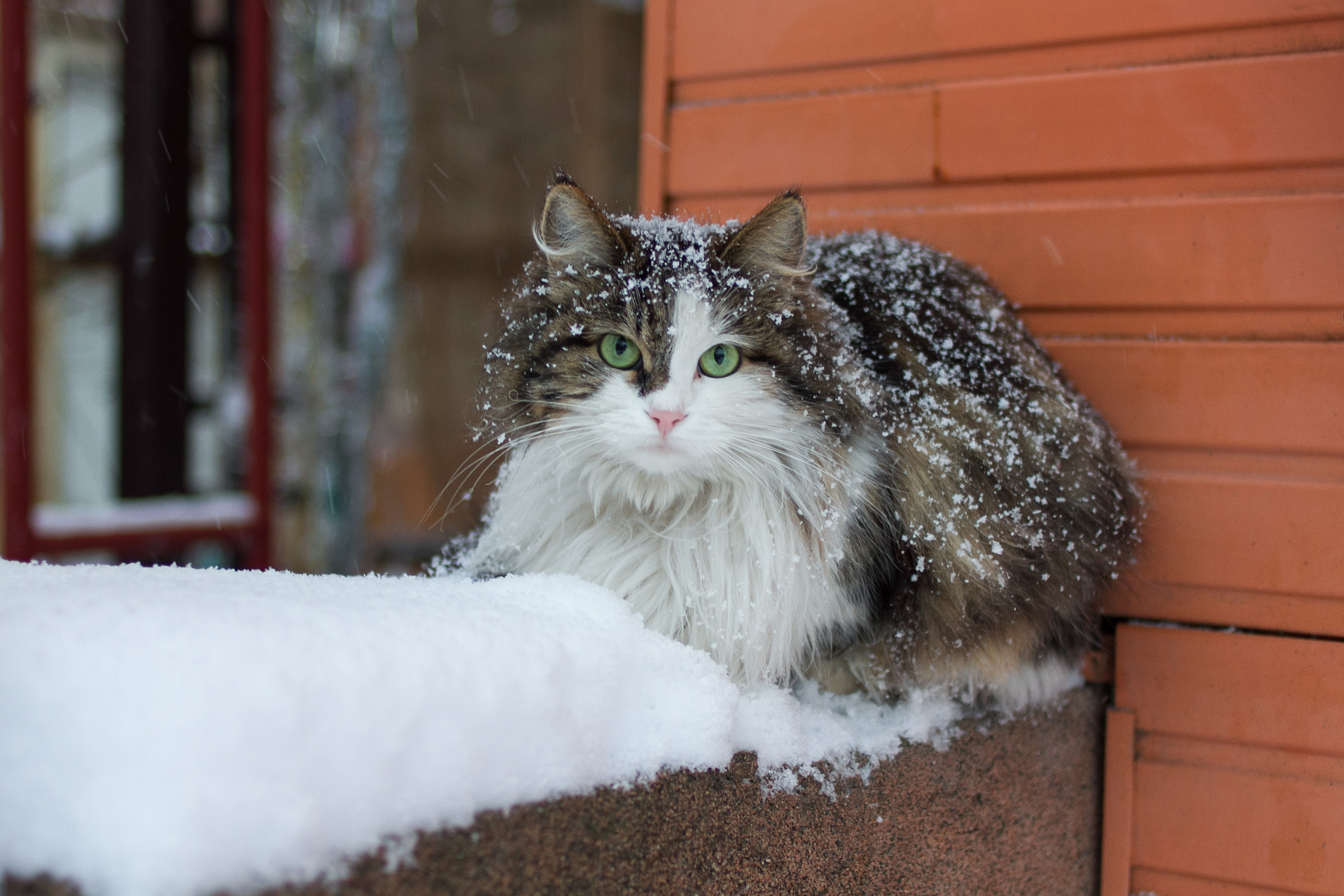How Cold is Too Cold for Cats?
Doctor of Veterinary Medicine

While efforts are made to answer all questions as quickly as possible, if an immediate answer is required or if your pet is in need of urgent or emergency care, contact your pet's veterinarian immediately.
Doctor of Veterinary Medicine

You will receive an answer from Dr. Lindsay and our vet/tech team as soon as possible, usually the same day.
All answers are provided for informational or educational purposes only, and are intended to be a supplement to, and not a substitute for, the expertise and professional judgment of your pet's veterinarian.
It may be necessary to consult your pet's veterinarian regarding the applicability of any opinions or recommendations with respect to your pet's symptoms or medical condition.
CloseDoctor of Veterinary Medicine

An error has occurred, please reload the page and try again.
CloseDoctor of Veterinary Medicine

While efforts are made to answer all questions as quickly as possible, if an immediate answer is required or if your pet is in need of urgent or emergency care, contact your pet's veterinarian immediately.
There is no answer related to your question

With their built-in winter coat, cats adapt well to the changing seasons, and many don’t seem to mind exploring the outdoors when it’s bitterly cold out.
But even the most adventurous cats can be at risk for hypothermia and frostbite in extreme temperatures. Learn how to determine when it’s too cold for your cat to be outdoors and what you can do to protect your cat from the dangers of winter weather.
How Do Cats Adapt To The Cold?
Most cats, including domestic shorthair and longhair, have a double-layered coat consisting of a smooth, somewhat water-resistant top coat and a downy, insulating undercoat.
In the fall, reduced daylight hours and cooler temperatures prompt your cat to shed their light undercoat to make room for a thicker winter undercoat.
You might notice changes in the amount of shed fur around your home, and your cat’s coat may feel denser and fluffier to the touch.
Cats also adapt to the cold by becoming less active, conserving their energy to help maintain their body temperature. They seek shelter in closed-in spaces and curl up in a ball to minimize heat loss.
While cats can adapt to the cold, even a dense winter undercoat cannot protect them from the dangers of extreme temperatures.
How Cold is Too Cold for Cats?
It’s too cold for your cat to be outdoors once it’s 50°F or colder.
Generally, temperatures below 50°F can put cats at risk for hypothermia, and they can suffer frostbite when it’s 32°F or below.
Your cat’s risk of overexposure to the cold will depend on their age, the thickness of their coat, how acclimated they are to the cold, and the amount of time they spend outdoors.
Kittens, senior cats, and those with chronic illnesses like diabetes may be at greater risk because their circulatory system may not work efficiently to conserve body heat.
How To Tell If Your Cat Is Cold
You can tell if your cat is cold by watching their body language. When a cat is cold, they’ll curl up a ball and lay their tail over their nose and toes. Their ears, nose, and paws may feel cold to the touch.
Even if your cat is indoors and not exposed to extreme temperatures, they may still be uncomfortably chilly in your home, especially at night. While not life-threatening, being a bit cold can make your cat less active, and in seniors with osteoarthritis, the cold may aggravate their achy joints.
Keep your cat warm and toasty by ensuring they have plenty of warm, enclosed places to nap, up and away from drafts. A bed by a window that gets plenty of sunlight can be a cozy place during the day.
Take care with heated blankets and space heaters, which should only be used around cats under supervision. Heated blankets and heating pads not designed for cats can be damaged by their claws and can become dangerously hot. Consider getting a heated pet bed. Heated pet beds are designed to warm up to your cat’s body temperature.
Protecting Your Cat in Cold Weather
Allowing your cat to roam outdoors puts their life at risk at any time of the year. Speeding cars, other animals, diseases, poisons, and parasites threaten their health and longevity, even when it’s not cold out. If possible, keep your cat indoors year-round.
If you cannot bring your cat indoors, or you care for ferals, strays, or community cats, do your best to provide your cat with warm, dry shelter.
Community cat organizations recommend creating an insulated shelter with a large plastic tote that contains a styrofoam cooler. You can cut a 5” diameter hole on one side to allow entry. Line the shelter with straw, which is the best material for combating moisture and mildew. Do not use blankets, hay, or other materials, as these linings can absorb water and freeze.
If your cat’s shelter is placed within reach of an electrical outlet, consider adding an outdoor heated kennel pad. If an outlet is not available, you can add warmth with hand warmers or a microwaveable heating pad, though you’ll need to refresh and replace those options each day.
Worried that you can’t keep your cat warm enough? Reach out to your local cat rescue organizations for help. You may find resources like help building a shelter or finding a foster or adopter for your cat.
 Swipe
Swipe


















